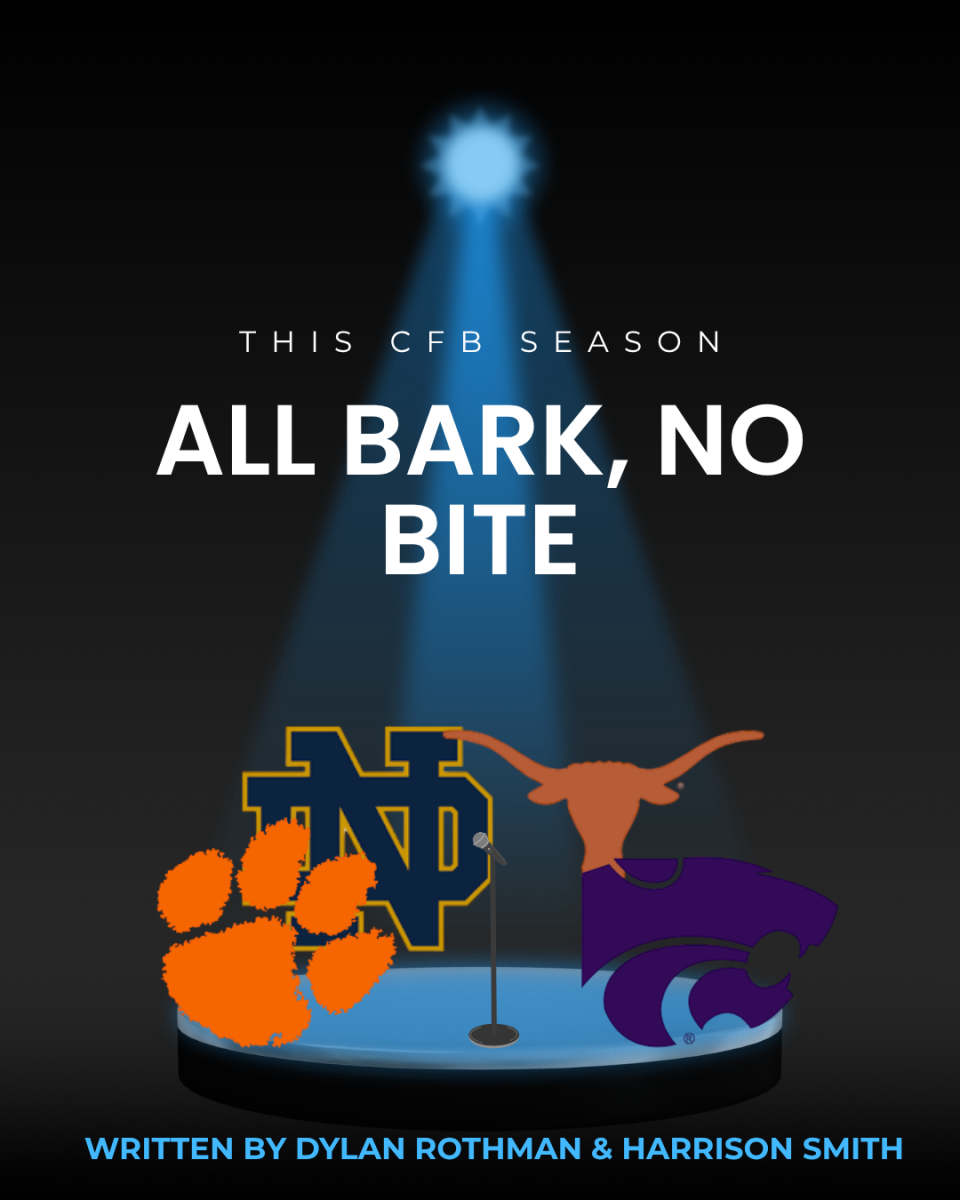If you’ve been watching any college or professional football lately, you might have noticed some changes. Some of the most significant changes in the NFL include the new kickoff format and the option of Guardian Caps. The other rule changes may not be as visible, but still impact the game. In college football, there is the addition of two-minute warnings and a 12-team playoff format as well as updated tackle requirements and regulations on reviewing plays.
When looking to change the rules in the NFL the committee has set questions that they ask. Does the rule change improve the game? How will it be officiated? How will it be coached? Can the player apply the rule on the field? Does the change enhance player protection?
According to the NFL Operations website, “The committee considers input from coaches, general managers, owners, current players and NFL Legends, the NFL Players Association, medical personnel and the media before advocating for any rule changes.” After asking these questions and discussing the potential rule changes, the new rule must have the support of 75% of the owners.
The most notable change in the NFL rules this season is the new kickoff format. Due to 2023 having the least amount of kicks returned by the receiving team and rising safety concerns at how quickly the kicking team moves down the field, the NFL committee has sought to change the kickoff procedure.
The new kickoff rule is set up where the kicker lines up on their 35-yard line while the other 10 players line up on the receiving team’s 40-yard line. On the other hand, the receiving team will have nine blockers line up between their own 30 and 35-yard line with two designated receivers down the field.
“The new kickoff rule is not very good because it limits the excitement of the game,” junior Cael Jacobson said.
According to NBC, the NFL has also designated “the 20 yards between the receiving team’s 20-yard line and goal line as the ‘landing zone’ for kicks.” If the ball doesn’t reach that zone or goes out of bounds, the receiving team gains possession of the ball at their own 40-yard line. If the ball is kicked into the end zone, the receiving team has the option to either return it or have it placed on the 30-yard line by downing it for a touchback.
“Now everyone has to wait for the ball to land in the landing zone before anyone actually moves,” Jacobson said. “Before everyone was more spread out and it allowed for more runs.”
Another main rule change is the removal of the hip-drop tackle. The hip-drop tackle is when the defender grabs the ball carrier with one or both hands and rotates or swings his hips to where he is behind or to the side of the ball carrier. The defender then drops his weight onto the ball carrier’s legs as opposed to dropping his weight on the ground. If the hip-drop tackle is seen during the game, the player’s team will receive a 15-yard penalty and an automatic first down will be assessed for the other team.
Some other rule changes include a new challenge rule that allows teams a third replay challenge if they had one successful replay challenge earlier in the game. Before this new rule, teams had to have two successful challenges to earn a third. In regards to reviewable replays, officials can now review if a passer was down or out of bounds before the pass was thrown, and if the play clock ran out before the ball was snapped.

The NFL has also changed its rules to allow players to wear a soft protective shell on the outside of their helmet, a Guardian Cap, in regular season games. This cap increases player protection against head injuries and are reported to have reduced 50% of concussions when they were worn by certain position groups in the 2022 and 2023 training camps.
“Early evidence on the Guardian Cap shows that there is a promise to lessen the chance of a concussion if you are wearing one,” CSHS athletic trainer Kyle Fisher said. “But we need more time and research to prove how effective they are.”
As of now, six players have worn a Guardian Cap in the regular season; Jeremiah Owusu-Koramoah for the Browns, Josh Whyle for the Titans, James Daniels for the Steelers, Jabrill Peppers for the Patriots, Kylen Granson and Rodney Thomas II for the Colts.
Rule changes for the 24-25 NFL season were not the only notable changes in fall sports. With college football gaining more notoriety every year, the NCAA Playing Rules Oversight Panel changed current rules and added new ones in order to make the college football system more similar to the NFL.
The first rule change added a two-minute warning in the second and fourth quarters which has been implemented in NFL games since 1942. Another rule that helps make college football comparable to the NFL is the new in-helmet communication system. One offensive and one defensive player now have access to communication with a coach and their helmets are marked with a green dot. The communication will be turned off when there is 15 seconds remaining on the play clock or when the ball is snapped, depending on which comes first. If there is more than one “green-dot” player on the field, there will be a live ball 5-yard equipment violation penalty.
Tablets will be permitted to view in-game videos while on the sidelines for play review. This allows players to view previous plays and learn from mistakes earlier in the game. A team is allowed to have up to 18 tablets and is only allowed to show in-game footage and they are not authorized to use them to review video with an official.
“I like that they allow sideline and press box replays because the high school has that too,” freshman linebacker coach Jake Quinn said. “It allows faster game adjustments because the player can see their replay.”
The NCAA also added a tackle rule change making horse collar tackles illegal. Previously horse collar tackles were allowed in the area between the two tackles on the offensive line and the tackle box, but it is now deemed illegal at any point on the field. If a horse collar tackle is executed, the team will receive a 15-yard penalty.
Although it isn’t considered a rule, the NCAA has changed the playoff bracket to 12 teams instead of the usual four. The 12 teams will be the five conference champions who are ranked the highest by the College Football Playoff Selection Committee and the other seven highest-ranked teams. The top four highest ranked teams will be ranked one through four and given a first-round bye week. The first round of playoffs will begin on December 20, 2024 and the National Championship will take place on January 20, 2025.
“I like it better because before with the four-team format, some of the good teams didn’t get a chance to compete in playoffs,” junior Cole Austin said. “With more teams being included this year, I think Tennessee has a shot.”











